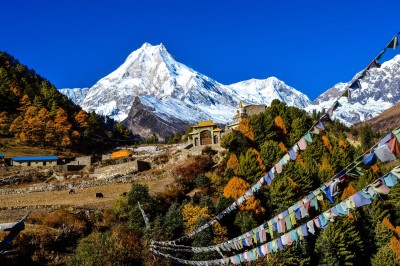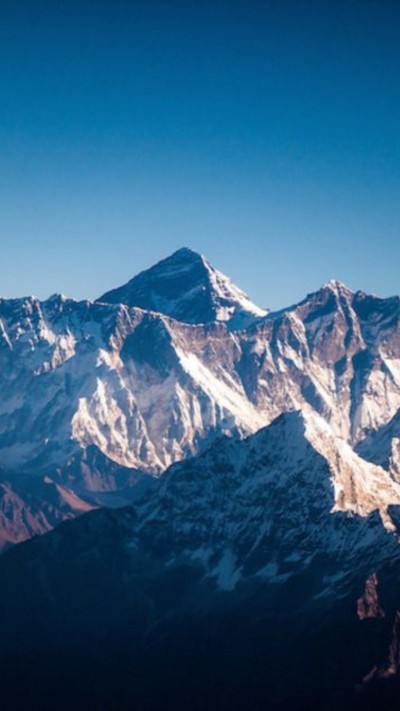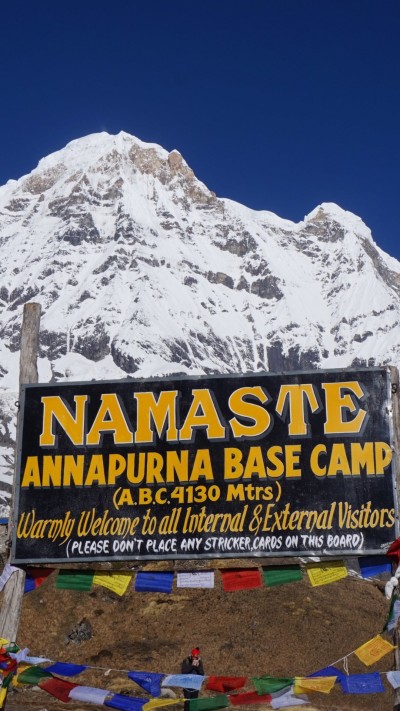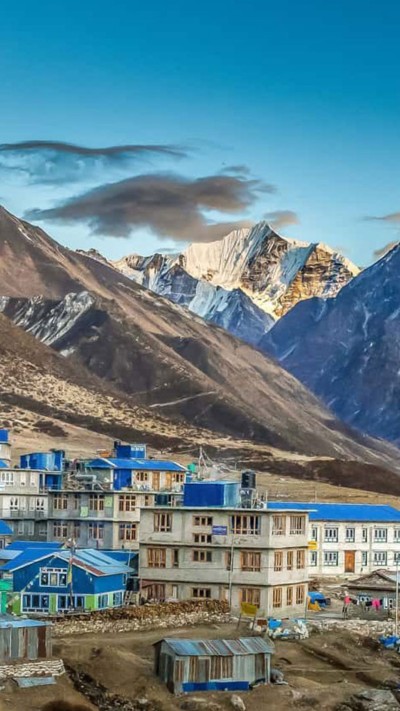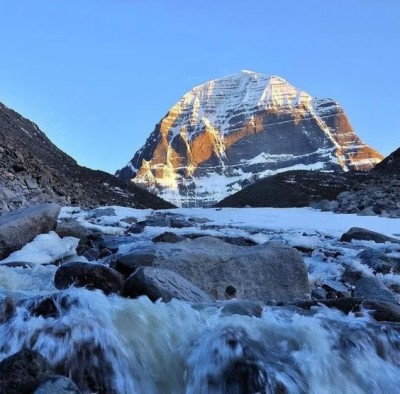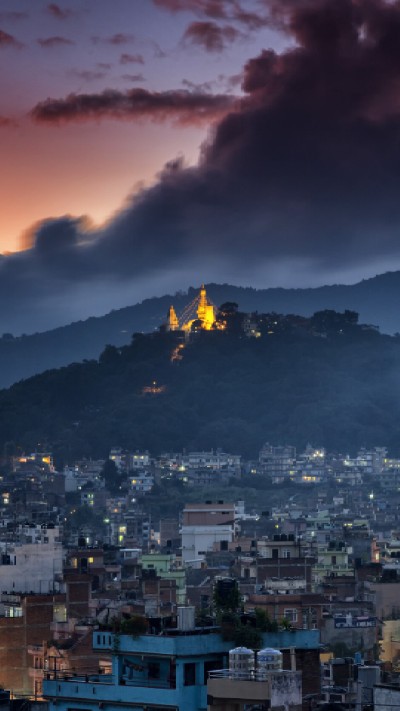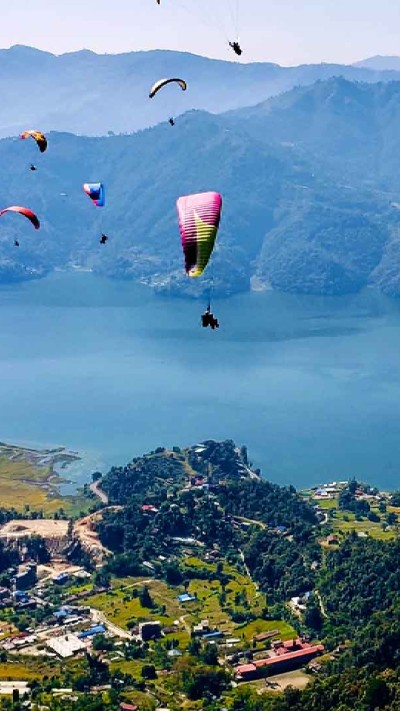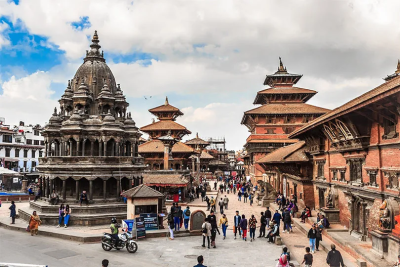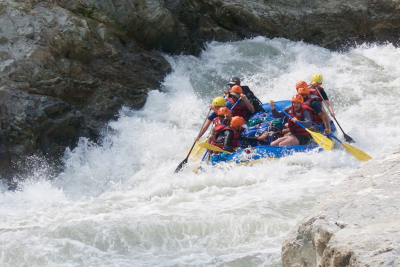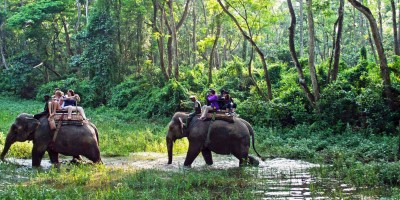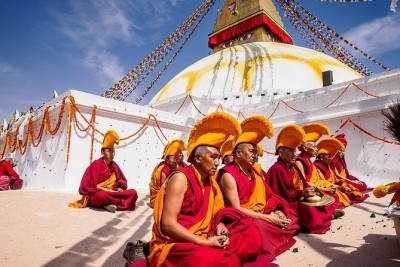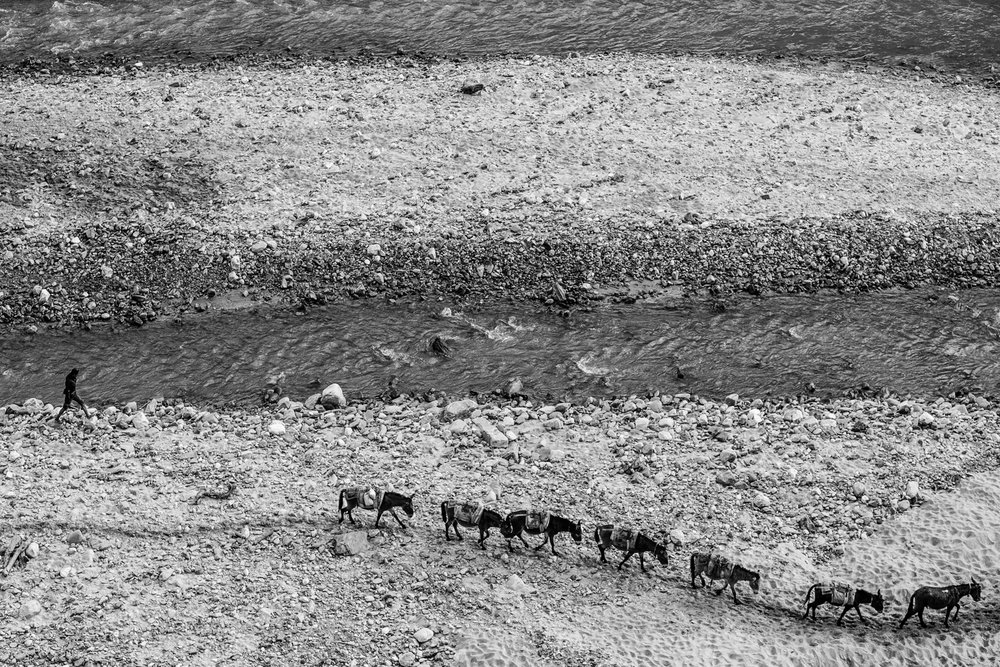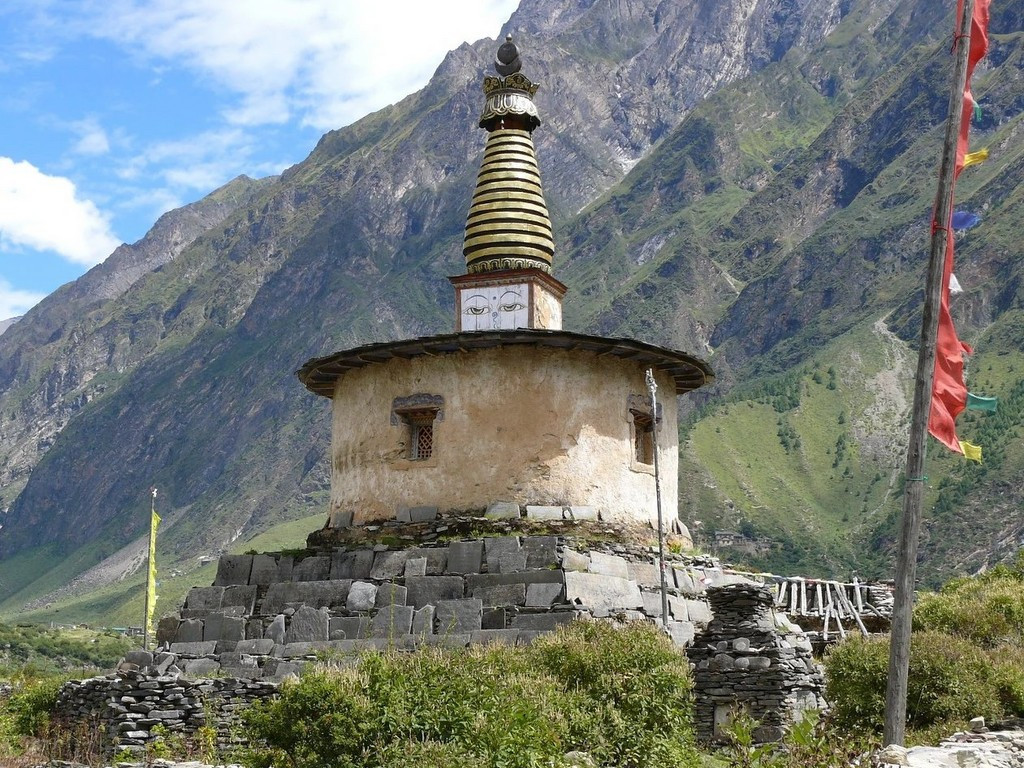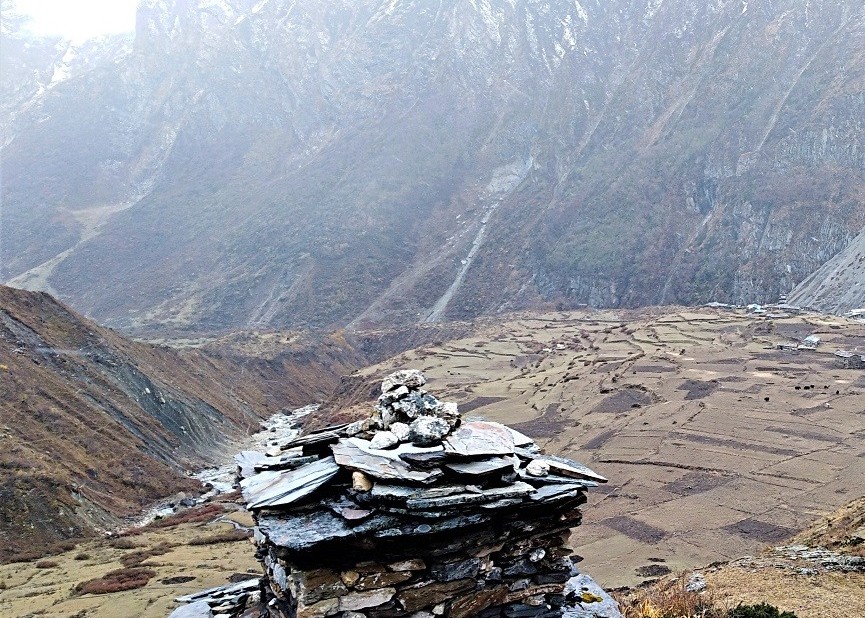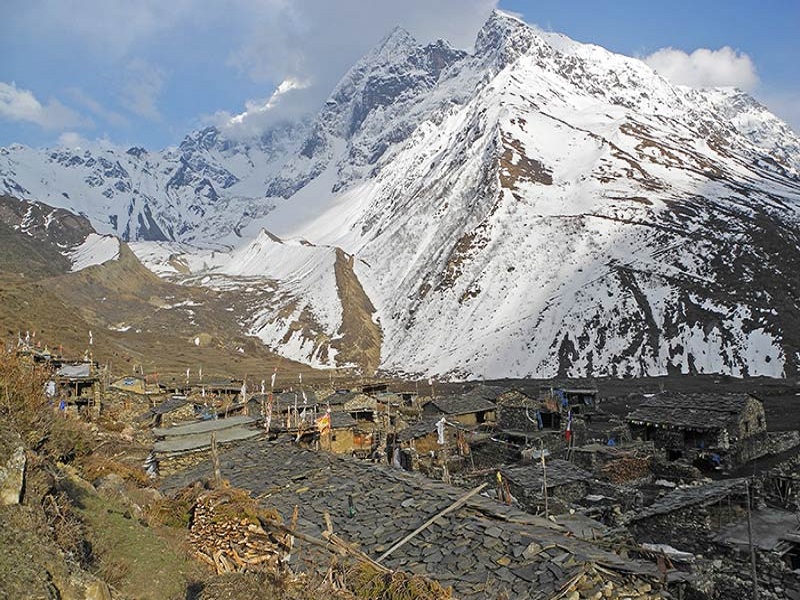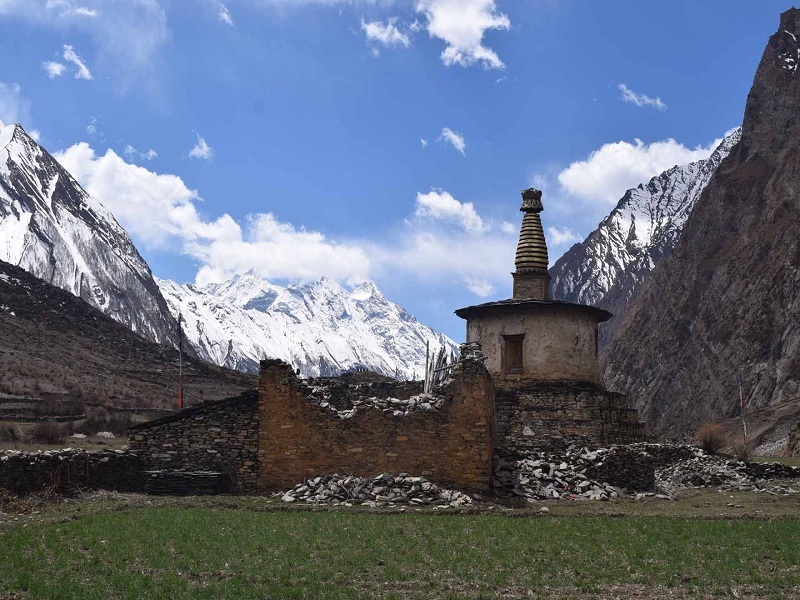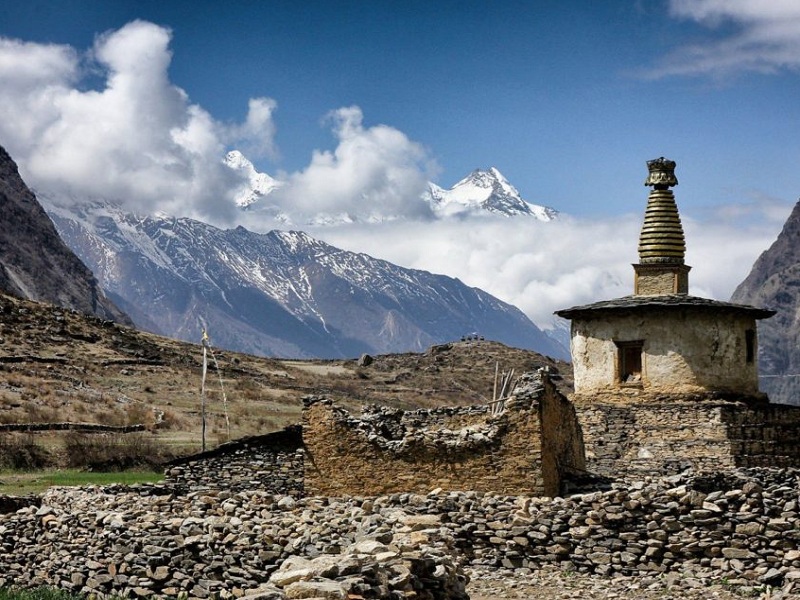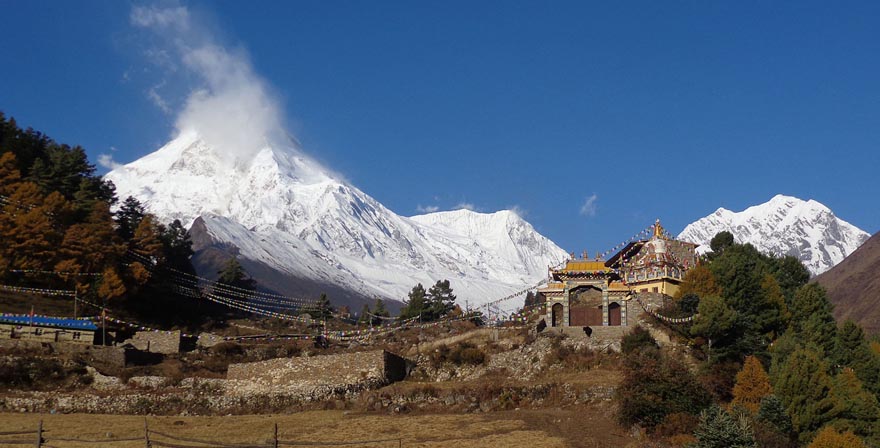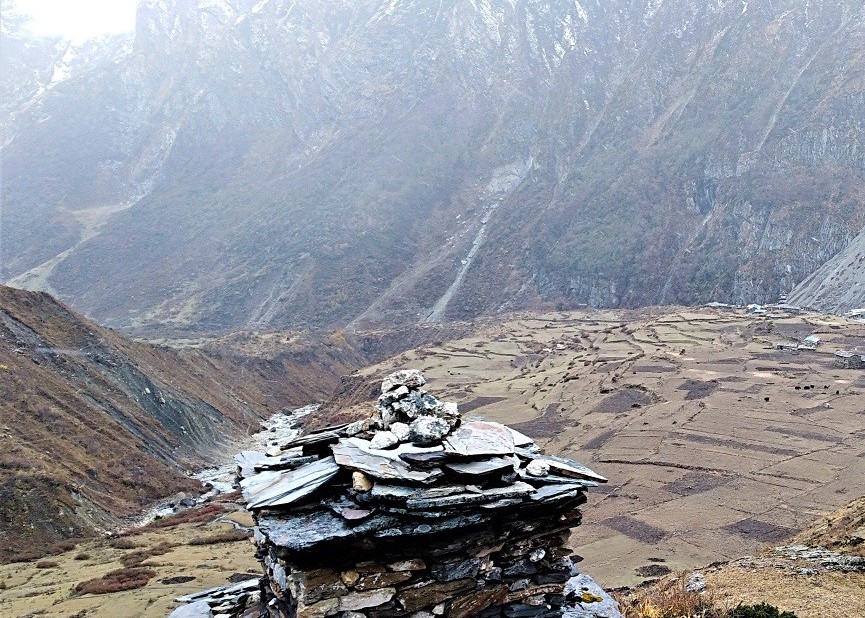Tsum Valley Trek Guide
Our Tsum Valley Trek guide offers a remote and culturally rich journey through the majestic Himalayas, providing stunning landscapes, ancient Buddhist monasteries, and encounters with the hospitable local communities.
Highlights of Tsum Valley Trek Guide:
- Enjoy a scenic drive from Kathmandu to Machha Khola.
- Explore the Tibetan arid region for a unique cultural experience.
- Discover Buddhist monasteries and Gompas dotted along the trails.
- Witness stunning waterfalls en route, adding to the beauty of the journey.
- Picturesque views of the Himalayas throughout the trip
- Visit iconic landmarks such as Mu Gompa, Rachen Gompa, and Milarepa cave.
- Cross Nepal's first Cantilever Bridge for an adventurous highlight.
- Immerse yourself in Tibetan and Buddhist lifestyle, culture, art, and religion.
Overview
Tsum valley, unknown and undiscovered to most and finally hatched with exploration under initiation from TAAN (Trekking Agent Association of Nepal). Derived from the Tibetan word Tsombo, Tsum holds many passes over 5000m extending from the northern part of Nepal to the border with Tibet.
This beautiful, panoramic landscape can be found in Gorkha District, which has a rich history dating back to the Shah Dynasty of Nepal. It is defined by mountains, culture, traditions, landscape and adventure. Beautiful routes have just become available for exploring.
Crossing through beautiful villages, entering into the restricted area with special permit takes you to the heart of cultural and traditional hub, where you will see the real and true image of ancient habitant, untouched by many.
The altitude varies from 1905m till 5093m at Ngula Dhojhyang Pass on the Tibetan border. Traditionally Tsum valley was culturally district geographical area called ‘Tsum Tso Chucksums’, which means thirteen provinces ruled as a single territory. This hidden valley is surrounded by Mountains called, Boudha Himal, Himal Chuli, Ganesh Himal and Sringi Himal. Tsum valley includes two remote VDCs, Chhekampar (Upper Tsum) and Chumchet (Lower Tsum).
Tsum Valley Trek Journey
Tsum is a holy Himalayan pilgrimage valley situated in the trans-Himalayan zone of the Gorkha, Nepal. Arughat, a 7-hour drive from Kathmandu, is the beginning and finishing point of the trek.
In the first part of the tour, Budhi Gandaki Valley is climbed through good roads through a mixture of dense forest, terraced fields and mountain villages. As we exit the central Manaslu trail in the Tsum canyon, we immediately get the feeling that we are really entering the secret valley.
During the ride, pass past alpine trees, glacier flowers, and indigenous peoples' warm hospitality. We go through the Buri, Machhakhola, Jagat and Philim lower Budhi Gandaki districts. The old Gombas of the city, such as Rachen Gompa, Mu Gompa, Dephyudonma Gompa, are visited as well.
Show more...Outline Itinerary ( 16 Days ) Expand all +
Upon your arrival in Kathmandu, our representative will meet you at Tribhuvan International Airport, extend a warm welcome, and transfer to your hotel. Take advantage of this day to adjust to the new time zone and immerse yourself in the lively atmosphere of Kathmandu. Orientation Program will be at 5 PM. After orientation program welcome Dinner with guide.
Show more...
Our guide and driver will pick you up from your place (Hotel) at about 9:30 am and your guided sightseeing tour starts from Swoyambhunath following with Boudhanath, Pashupatinath, and Patan Durbar Square. You will have a lunch break at Bouddha and you will be escorted to your hotel in the late afternoon.
Show more...
After breakfast, we'll head to Machha Khola, where our trek begins. The journey from Kathmandu to Dhading Besi is a smooth 3-hour drive on a paved road. From there, we'll encounter a rough and winding dirt road to Machha Khola, lasting 5 to 7 hours depending on traffic and road conditions.
The total travel time for the day will be approximately 9 to 10 hours. Please note that the road from Soti Khola to Machha Khola is recently constructed and not yet paved. To ensure your comfort and safety, we'll arrange sharing 4WD vehicle with an experienced driver for your transportation.
Show more...
Once we pass the Machha River and Khorla Besi, we'll come across a relaxing hot spring known as Tatopani. Following a path through the forest, we'll arrive at Dovan, situated beneath the impressive Budi Gandaki river. As we climb higher, you'll notice a change in the scenery and the speed of the rapids.
Show more...
Our trail moves uphill and then continues through a flat leveled path trail to sandy banks. The path then gets steep near Sirdibas and as we cross a dramatic suspension bridge over the river, we further climb up to a beautiful village of Phillim. From Philim, we lose the height and enter to Tsum valley. As we head a little further with a climb, we reach Lhokpa. The views of Ganesh Himal and Shringi Himal from Lokpa is amazing.
Show more...
Today will be challenging as we climb to higher altitudes, mostly uphill. Along the trail, we'll catch glimpses of the Himalayas peeking through the scenery. Passing by charming villages like Lungwa Khola, we'll hike through pine forests to Gumlung. Crossing the Siyar Khola, we'll arrive at Chumling, a lower part of the Tsum valley known for its Chumling Gompa and quaint stone streets.
Show more...
Leaving behind Chumling, we begin our walk to Chhokang Paro. Chookang Paro is also popularly known as Chhekemper and is located on the top of the hill. Our trail for today follows one of the tributaries of the Budhi Gandaki River for the most part of the day. We pass a small monastery on the way and crosses another tributary from where we begin to ascend up to the hill to Chhekampar. Chhekampar consists of two unique settlements namely Chhokang and Paro. Being on the top of the hill, Chhekampar acts as a vantage point that offers close-up views of Ganesh Himal Range.
Show more...
The village of Nile is to the west, which is the north of the upper Tsum valley last settlement. As we pass into the grotto of Piren Phu, also known as the cave of piegeons. It is one of Tsum Valley's most holy caves. It is located near the town of Burji, at the foot of a steep hill. It was assumed that the revered Tibetan Saint named Milarepa meditated in that cave because of the cave 's footprint. The road is a perfect way to walk through green woods and the landscape can turn lush and low. Two different convents are connected to the rocky cave.
Show more...
After an early breakfast in the morning we will abandon Nile as the road progresses towards Mu Gompa. This is the region's largest monastery. The highest and most far-away in the Tsum Valley is Mu Gompa. It was established in 1895 A.D. and consists of several books, among them a Kangyur, an images of Guru Padmasambavya and Tara. Chortens rows and spectacular mountain views and houses have been developed into the monastery. One of the oldest monasteries in the Tsum valley is Dephyudonma 's ancient monastery associated with the dawn of Buddhism run by Lama on the lap of rough mountains.
Show more...
We descend down the valley to Chhule and continue walking down to Phurbe. We stay on the east bank of the Siyar Khola and cross flat boulder-covered plains and follow the power lines to Rachen Gompa/ Nunnery Gompa. We visit this ancient gompa and interact with the monks and nuns living in the gompa.
Show more...
Next day leaving Rachen Gompa we trek towards Domje village form where the trail starts to cross over a mani wall with several flags of prayer, continuing the steep climb through a oak, junipar and rhododendron wood. It is a lovely view of the Tibetan culture. Eventually, there is a prayer flag in the forest marking the climb and passing through a large silver pine to the Gompa in Lungdang. In the mountains.
Show more...
After our breakfast we walk down to Rainjam and catch the unforgettable glimpse of the Himal Ganesh. We climb up and down to Ripchet slightly after that. The village of Ripchet is lovely with big houses. It offers you the chance to learn about the local people 's hospitality history, practices and lifestyles.
Show more...
It's time for us to descend to Jagat, where we'll reconnect with the Budhi Gandaki river. Along the trails, we'll catch glimpses of the mountains. The hike today through forests and downhill terrain should be pleasant and easy on our legs. We'll traverse several suspension bridges to reach Sirdibas village before finally arriving at Jagat.
Show more...
Both Khorlabesi and Machha Khola are in the banks of the Budhi Gandaki River. After hot breakfast, we will take the trail to Machha Khola. It’s mostly a decent today. We will walk on the side of the mountain with the roaring Budhi Gandaki below us, cross suspension bridges and finally arrive at Machha Khola, the end point of our trek.
Show more...
We will depart for Kathmandu in the morning, starting with a newly built but unpaved road until Dhading Besi, where some bumps are expected due to the current state of the route. From Dhading Besi, the road transitions to concrete, offering a smoother but still mountainous drive. While the terrain can be uneven at times, the journey offers scenic views, and we anticipate arriving in Kathmandu, by late morning or early afternoon, depending on traffic and weather conditions.
Show more...
Use your last morning in Kathmandu according to your flight time. Pack your things, check out of the hotel, Head to Tribhuvan International Airport for your departure. Wishing you a safe and pleasant journey back home!
Show more...Departures & Availability
What's inside the package?
Inclusions
Exclusions
Additional Information
Required fitness level for Tsum Valley Trek
Our daily trekking itinerary is 5-7 hours in lower altitude of 3500m and normally lasts from 3-4 hours daily on high mountains altitude excess of 3500 m. Steeper slope trekking is physically difficult than low latitudes trekking. This is a distant mountain trip, with long ascents, steep descents and straight roads after a straight trekking trails. For trekking, past hiking experience will be an added benefit, as it requires no technical knowledge and skills. Trekkers who can travel with a light day pack five to six hours a day at a respectable pace can take part on this journey.
Some days take longer hours of trekking so you need to be reasonably fit and ready for long days. Daily workouts and jogging a few weeks before the trip are a good time to enhance our endurance. In order to participate in the trek, all participants should be in good health with normal physical fitness and have a strong attitude, belief and determination. Before undertaking the trip it is very important to ensure that you are as fit to trek for long hours as possible. Before booking the trek, participants with pre-existing medical conditions such as heart and lung disorders and blood disorder should notify us.
Lodging and meals during the trek
All accommodations are on twin-sharing room BB basis. Single room will be served on request with paying the supplementary. During the trek at Lodges/Tea houses the room will be sharing basis usually with attached bath room in lower altitude but note that it might be difficult to find with attached bath room at higher altitude.
Mostly during lodge trek, we can enjoy authentic Nepalese fresh produce (Dal bhat, vegetation, curry ...) rice, lentil, along with more widely accepted cuisineYou may select from the menu of the lodge according to your preferences and at the moment our guide would be present with you to help you taste the food and decide what to eat if you have if you find the meals difficult to choose. From the teahouse, or from the lodge table, breakfast and dinner is served, while lunch is provided on the way to the next stop.
Availability of drinking water during the trek
Water can be bought from nearby lodges and shops during a hike and boiled water can be filled at additional expenses. In the drinking water, a water purification pill is recommended.
Obtaining Trekking Permits
You need Manaslu special permit with Conservation Area Permit, and Annapurna Conservation Area Permit (ACAP) fees, Himalayan Social Journey will take care of all the necessary paperwork.
Please dont forget to bring your 4 PP sized photos for the TIMS and Permits.
Drinking water during the trek
The Tsum Valley trek is physically exhausting and drinking a lot of water is a must. The first several days at low altitudes can be hot, so expect a lot of water to be needed. At cooler, higher altitudes, you can feel less thirsty, but drinking lots of water allows you to acclimate. Planning to have at least two liters of water when trekking every day is a smart way to start. Filling up water is quick. Taps in, out or in guesthouses mean that there are plenty of places to fill your bottles and/or your water bladders. This could be where you stay, a lunch stop, or a shared public tap used by locals. Use an efficient sterilization method to make sure your water is safe and not contaminated in anyway.Bottled water is available to buy throughout the trek, but we would advise against this for a number of reasons.You do not need them if you use sterilization method. Environment concerns are there and also buying water is expensive up in the mountains.
Extra Expenses
It’s difficult to give an exact amount of money that you should bring. Costs will vary according to how much you want to spend for shopping and where and what meals (lunch & dinner) you want to eat. Trekkers find that around $20 (for lunch & dinner) a day is reasonable for the trekking days.
As for the tips, A general rule of thumb for tipping is USD 25 for the guide per traveller and USD 25 for porter between two travellers if you are fully satisfied with their service. So we suggest you allocate a minimum of USD 50 for Tipping. This is just a guideline and you may tip whatever / how much you think is appropriate for the services rendered which made your trek a memorable one.
Tsum Valley Trek with Himalayan Social Journey
Guides and Porters
Our local Nepali team is one of the most experienced, hospitable and respected trekking outfits in Nepal. The team is fully licensed and affiliated with the Trekking Agency's Association of Nepal (TAAN), Nepal Mountaineering Association, Nepal Tourism Board, Govt. of Nepal, Sustainable Tourism Network, Himalayan Rescue Association and Kathmandu Environmental Educational Project. You will be provided with the professional and an experienced English speaking trekking guide with the good knowledge of the place and the trek. The trekking crew is skilled with the experience of over 10 years, well-trained, friendly guide and, courteous and helpful porters, assured of a wonderfully memorable experience.
For the trek, we'll have one porter for two people as per group size. The porter will carry 12-15 kg per person luggage during the trek. You need to carry your day pack to keep your personal belongings such as wallet, camera, water bottle, dry snack, headlight, gadgets, etc. The safety and concerns of our porters is our collective responsibility. We take our responsibilities towards them and their safety concerns strictly. On your part, please carry only things that are of absolute necessities.
Other Programs and complimentary services with this trip
• Welcome and Farewell dinner
• Yoga Classes
• Spa services
How do we make sure you get the best experience of this trek?
We are your completely flexible travel partner. Want to follow different route? We have you covered. Have extra time in Nepal? Excellent! We have more add-on tours like Chitwan Jungle Safari, Cable Car ride to Chandragiri hills, Cooking and Yoga classes in Kathmandu and so on. Would like to customize the trip? Well, why not? Give us your ideas and we will prepare complete itinerary for you. Do you want to use different standard of accommodations than provided in the itineraries? Of course! You absolutely can. From your arrival until you departure, your wishes are our command. Feel free to make the request.
Essential Info Expand all +
The monsoon that is almost everywhere in Nepal is in the fall (October-Nember) between the mid-June and the end of September, the most popular season is the summer, where the skies are washed and the wetter looks are superior, springs (March-May) are another common time for trekkers. Likewise, most people are unwilling to walk during the winter when the temperature in high elevation is too cold and snow can block high passes. The trail is unworkable and dangerous during the summer / mountain season.
You need some previous trekking activities and good health. Climbing and descending are quite common walking experiences and you may also need to cross little glaciers. Walking in higher altitudes is more physically demanding than walking in lower altitudes, however, the pace of the trek will vary in compensation. If you are in excellent health with average physical fitness and have strong determination, you will complete this trek successfully. Exercising, particularly jogging and climbing stairs regularly for some weeks prior to your arrival is recommended to enhance your strength and fitness. Past hiking experience would be an asset, but no technical skill is required. This kind of trip gives you a lifetime experience, a breathtaking stroll around the mountains.
All accommodations are on twin-sharing room BB basis. Single room will be served on request with paying the supplementary. During the trek at Lodges/Tea houses the room will be sharing basis usually with attached bath room in lower altitude but note that it might be difficult to find with attached bath room at higher altitude.
Mostly during lodge trek, we can enjoy authentic Nepalese fresh produce (Dal bhat, vegetation, curry ...) rice, lentil, along with more widely accepted cuisineYou may select from the menu of the lodge according to your preferences and at the moment our guide would be present with you to help you taste the food and decide what to eat if you have if you find the meals difficult to choose. From the teahouse, or from the lodge table, breakfast and dinner is served, while lunch is provided on the way to the next stop.
The internet service is available at lodges with an extra cost. You can contact your family and friends via lodges, but communication at high altitudes is via the safety phone. For any assistance during the trek, you will always be linked to Kathmandu's HSJ office. Often, the signal may be not very good before the high altitude, depending on the type of network you use. On your request, a separate local sim card can be issued for your good access to the connection (most of the places now have wireless internet services at extra costs).
Electricity for the camera and the handheld battery charge is accessible in the lodges. However extra cost shall incure. Most lodges are equipped with hydropower and some have solar panels.You can charge all your devices staying overnight in one of chosen lodges or tea houses.
The Tap water supplied along the trails are considered safe for drinking and local people drink it without treating, however for the foreigners, it is best that the tap water be only drunk after purification. There are two good options for having proper drinking water during the trek. You can bring water purification tablets or fill your bottle for a nominal fee from the recognized and regulated "pure water" stations along the trek. As the last alternative, you can also purchase bottled water at the lodges but this is not recommended. It is very important that you drink at least 3 liters of pure water daily during the trek
You need Manaslu special permit with Conservation Area Permit, and Annapurna Conservation Area Permit (ACAP) fees, Himalayan Social Journey will take care of all the necessary paperwork.
Please dont forget to bring your 4 PP sized photos for the TIMS and Permits.
We suggest taking out an insurance plan for your individual accountability, accidents and illnesses during the service. Regarding the type of activity, you may be asked to show a certificate of insurance for help and support, sanitation and search. This service is private and not free in Nepal, the helicopter will not take off until it is convinced to pay for the insurance.
There will be two people accommodated in each room for the duration of the tour. If you prefer private accommodation, you'll find the option for "single supplement" of USD 250. Important: Please note that during the trek there are some lodges which won't have sufficient rooms to provide private accommodation. So, even if you purchase single supplement you will end up sharing a room for some days of the trek.
Yes, Himalayan Social Journey is flexible travel partner. It is possible to organize the private trip or private group trip to Tsum Valley Trek. The minimum people for the group is 2 however supplementary charge will be applicable for the solo traveler wanting to do private trip.
In the average, you will be walking for 6-7 hours each day during the Tsum Valley Trek
No, there is no age limit to do the trek. If the person is healthy and physically fit, they can do the trek.
No, the company does not provide trekking poles, you will have to manage it on your own or our guide can help you buy it when you are in Nepal. The pair of trekking poles cost from $10-$15.
Yes, we do provide sleeping bags. The sleeping bags we provide are of good quality. They help you sustain the colder climate in Nepali mountains up to -25 degree Celsius of temperature. However if you need the one of your own, you can buy one here. Your guide shall assist you to get it here. Keep the track of the weather forecast of the area and pack your clothes accordingly. This would help you be prepared for the type of weather Nepali Mountains are accustomed to.
List of Equipments you will need for trek
Clothing
- Trekking boots
- Short-sleeved Trekking shirts
- Trekking pants and jackets
- Thermals underwear
- Long-sleeved Trekking shirts
- Insulating down jackets
- Woolen cap
- Trekking Gloves
- Raincoats
First Aid
- Diamox tablets
- Sanitary pads / Tampons
- Anti-nausea Medicines
- Band-aids
- Mosquito and insect repellents
Toiletries
- Soap
- Toilet Paper
- Shampoo
- Sunscreen
- Moisturizer
- Hand sanitizer
Accessories
- Sunglasses
- Sleeping bag
- Cameras
- Batteries
- Water Bottle
- Solar Chargers
- Hot water Thermos
Important Documents
- Passport
- Travel Permits
- 4 PP size photos
Generally, plan on spending around USD 15 to 20 per person each day. This covers expenses like water, tea or coffee, snacks, and hot showers in the mountains, as well as meals in Kathmandu. If you plan to shop for souvenirs or local Nepali goods, it's a good idea to bring some extra cash.
Important Information Expand all +
There are three ways to get a visa for Nepal
- Visa on arrival: You can get a visa on arrival at the Tribhuvan International Airport in Kathmandu or other designated entry points. The visa fee is USD 30 for 15 days, USD 50 for 30 days, or USD 125 for 90 days.
- Online application: You can apply for a visa online through the Nepal Immigration website. https://nepaliport.immigration.gov.np .The visa fee is the same as for visa on arrival.
- Nepalese Embassy or Consulate: You can also apply for a visa at a Nepalese Embassy or Consulate in your home country. The visa fee may be different, so check with the embassy or consulate.
Visa requirements
- Passport valid for at least six months from your planned entry date into Nepal.
- Visa application form.
- Passport-sized photo (Bring 4 )
Gratis Visa (Visa for Free)
Gratis Visa is issued free of cost in case of following categories of Visa applicants:
- Children below 10 years except US citizens
- Up to 30 days for SAARC Citizen - Bangladesh , Bhutan, India , Maldives , Pakistan , Sri-Lanka (except Afghanistan) visiting Nepal for the first time in a given visa Year. Afghan citizen are eligible for Gratis Visa on Arrival only upon the recommendation of Department of Immigration. If you are an Afghan citizen, you can request concerned institution inviting you to Nepal for necessary paperwork with Department of Immigration to get you Gratis Visa 'On Arrival'.
- Non Residential Nepalese(NRN) card holder ( issued by MoFA /Nepalese diplomatic missions abroad)
- Chinese Nationals for 150 days
Nationals of following countries are requested to acquire Visa prior their arrival from their nearby Diplomatic missions (Embassies/consulates) of Nepal Government.
- NigeriaGhana
- Zimbabwe
- Swaziland
- Cameroon
- Somalia
- Liberia
- Ethiopia
- Iraq
- Palestine
- Afghanistan
- Syria
- Refugees with travel document
If your passport is not valid for at least six months, you will need to renew your passport before you travel to Nepal. You can renew your passport at your local passport office. The process of renewing your passport can take several weeks, so it is important to start the process early.
By air:
Nepal has Three international airports: Kathmandu, Bhairawa, and Pokhara. Currently, Pokhara airport does not handle international flights. However, there are a few flights to Bhairawa from few countries. The main international airport in Nepal is Tribhuvan International Airport (TIA), located in Kathmandu. You can search TIA airport to book your International flight.
By land: There are multiple land entry points along the borders of Nepal, India, and China. These entry points include Kakarvitta, Birgunj, Bhairahawa, Nepalganj, Dhangadhi, Mahendranagar, and Kerung(china boarder)
If you've booked a multiday tour or trekking package with Himalayan Social Journey, we'll pick you up from the airport. Upon arriving at Tribhuvan International Airport in Kathmandu, our representative will be there to greet you with a sign displaying your name and our company's name. We'll then take you to your pre-booked hotel.
To make the pick-up process smooth, kindly share your flight details, including flight number and arrival time. If there are any changes to your arrival plans, please inform us as soon as possible so we can arrange your pick-up accordingly. Travel with us for a hassle-free experience!
Please keep this thing in your mind that there are some airport touts and scam artists who take advantage of tourists. They might offer to carry your luggage and they want a large amount of money. Sometimes they intimidate our drivers and even take away their signs. Anyway...if you want someone to help you with your luggage you can give them NOT MORE THAN 1 - 2 DOLLARS. This is a small hassle that tourists sometimes face upon arrival at the airport. Do not stress about this but just be aware not to give more than a few dollars for their luggage handling if you choose to take someone's services. Nepalese in general are very kind and hospitable people.
The official currency of Nepal is the Nepalese rupee (NPR). Major foreign currencies such as USD, AUD, and EURO are accepted for VISA.
There are plenty of ATMs in these major cities, so you can easily withdraw cash from your foreign currency bank account. Credit cards are also accepted in some shops and restaurants, but they are not as widely accepted as cash.
On the trek, you will only need to use Nepali rupees. You can exchange your foreign currency for Nepali rupees at your hotel, money exchanges, or the airport. Himalayan Social Journey representatives will also be happy to help you exchange money.
If you have booked a trekking or multi-day tour with Himalayan Social Journey, the orientation meeting usually happens at your Kathmandu hotel around 4 or 5 pm. Our team will provide you with the specific details upon your arrival.
If you're arriving early or leaving late, please ensure to arrange extra hotel accommodations by contacting reser[email protected]. Let us know if you'll be extending your stay in Nepal, and we'll book your additional nights. Also, kindly share your flight details with us to facilitate a smooth pick-up and drop process.
When you book a trip with us, the standard accommodation arrangement is on a twin-sharing basis. This means two people will be staying in each room throughout the trip. However, if you prefer to have a room to yourself or if you're traveling alone, you can choose the "single supplement" option. By selecting this option, you'll have a private room during the trip, but please note that there will be an additional cost for the single room arrangement according to tour / trek.
For each tour date, there will be several separate groups, each with a maximum of 14 people and their own experienced English-speaking guide. During the trek, there will be a suitable number of porters available to carry your luggage. Additionally, if you prefer to do a private tour or trek with your own group, that is also possible.
Nepal has five main seasons: summer, monsoon, spring, autumn, and winter. Each season offers unique experiences and weather conditions.
Winter (Late Dec - Feb): Cold temperatures, great for festival tours and special highlights.
Spring (Mar - May): Magical rhododendron blooms, ideal for trekking and peak climbing.
Monsoon (Jun - Aug): Low season with rain, but perfect for nature lovers and discounts on hotels.
Autumn (Sep - Nov): Peak season, clear weather, and popular trekking regions fill up fast.
You can check the live weather condition via this website https://www.accuweather.com
The hotel in Kathmandu where you'll stay during the trip offers complimentary storage services. You can leave your luggage and extra clothing that you won't need for the trekking / tour. Rest assured, you can collect them once the trek and tour are over.
Don't forget to bring both TWO and THREE-pin travel adapters! If you don't have them, you can purchase them at supermarkets or electronic shops in Kathmandu. Our guide will be there to assist you if needed. You can get information about plug and voltage in below link.
Most places in Nepal are covered by mobile network providers, especially Ncell and Nepal Telecom. You can use data services for communication. You can buy a SIM card at the airport counter. There are also free and paid Wi-Fi services in most tea houses in Nepal during trek.
Here are some tips for staying connected while you are in Nepal:
- Buy a SIM card as soon as you arrive in Nepal. This will give you access to data services and allow you to make calls and send text messages.
- Check the coverage map of your mobile network provider before you travel. This will help you to know where you can expect to have good reception.
- If you are planning on visiting remote areas and need to be in connected on Internet , you may want to consider renting a satellite phone. This will give you access to communication even in areas with no mobile network coverage.
- There are many free and paid Wi-Fi hotspots in Nepal. You can find these at hotels, tea houses, restaurants, cafes, and even some temples.
If you would like to book extra activities such as Paragliding, Bungy jump, Mountain flight, Heli Tour , Bhaktapur Sightseeing many more programs. You can find updated price and program detail in this link: https://hsj.com.np/tourtype/daytours. You can book by contacting us at [email protected] For longer excursions such as Bhutan, Tibet, India, and any other treks also, we can help but please contact us immediately at [email protected]
If you have purchased a voucher from any deal company, please come in contact with us with the voucher code (redemption code) so that the voucher can be redeemed on time. Since we need time to purchase your domestic air ticket and make other arrangements, kindly confirm your spot with your suitable date at-least 2 months prior to the commencement of the tour. Your booking on a particular tour date is subject to availability of spots. You can redeem you voucher through this link too : https://hsj.com.np/voucher-redemption
A typical suggestion for tipping is to allocate around USD 50-60 for the guide and porter if you're happy with their service. However, the amount you decide to tip is entirely up to you, and you can give whatever you feel is appropriate based on the excellent service they provided during your tour / trek
Packing List for Tour:
Pack appropriate clothing for the weather conditions during your visit. Include comfortable walking shoes, a hat, sunglasses, sunscreen, and insect repellent. Don't forget essential travel documents, a camera, and any necessary medications.
Packing List for Trekking
Hiking
- Trekking Poles - 1
- Daypack - 1
- Backpack - 1
- Packcover
- Water Reservoir - 1
Sleeping
- Sleeping bag - HSJ will provide
- sleeping bag liner
Clothes
- Underwear - 3
- Socks - 3
- Bra - 3
- base Layers pant - 1
- Trekking Tshirt - 3
- Trekking Pants - 2
- Rain Pants - 1
- Hiking Shoes/ Boots - 1
- Gloves - 1
- Hat - 1
- Down Jacket - 1
- Wind Breaker - 1
- Sandles -1
Miscellaneous
- Sunglasses - 1
- Books or E-reader (optional)
Hygene/Saftey
- Microfiber towel - 1
- Toothbrush - 1
- Toothpaste - 1
- First aid kit - 1
- Medicine kit -1
- sunscreen -1
- sewing kit -1
- Soap/shampoo - 1
- Comb or brush - 1
- Period supplies - 1
- Toilet paper - 1
- sanitising gel - 1
Electronices
- Camera
- Phone
- Extranel Hardrive (optional )
- Head touch
- Power bank for charging Phone
Packing List for Climbing:
Clothing
- Trekking boots
- Short-sleeved trekking shirts
- Trekking pants and jackets
- Thermals underwear
- Long-sleeved Trekking shirts
- Insulating down jackets
- Woolen cap
- Trekking Gloves
- Raincoats
First Aid
- Diamox tablets
- Sanitary pads and tampons
- Anti-nausea Medicines
- Band-aids
- Mosquito and insect repellents
Toiletries
- Soap
- Toilet Paper
- Shampoo
- Sunscreen
- Hand sanitizer
Accessories
- Sunglasses
- Sleeping bag
- Cameras
- Batteries
- Water Bottle
- Solar Chargers
- Hot water thermos
Important Documents
- Passport
- Travel Permits
Peak climbing gears (HSJ will provide)
- Climbing Helmet: Choose a good-quality climbing helmet. Make sure your warm cap fits under your helmet.
- Climbing Boots: High-altitude, insulated, stiff-soled climbing boots.
- Crampons: C2 crampons that fit the climbing boots.
- Climbing Harness: Good-quality climbing harness.
- Ascending device or Jumar
- Descending or belay device
- Tape sling: UIAA tested a 220cm open tape sling or a 2 x 120 cm closed tape sling.
- Carabiners: 2 x lockable carabiners. 2 x non-locking carabiners
- Prusik loop: Best quality Prusik loop
- Ice ax: An ice ax with a wrist strap for climbing
If you cancel the trip for any reason, the 20% deposit amount will not be refunded. If you have paid the full trip amount and need to cancel, you will receive your money back, but a cancellation charge of 20% will still apply.
For voucher holders who purchased vouchers from deal companies, we must adhere to their cancellation policy. However, under both circumstances, we are flexible and can reschedule your trip for a later date. To cancel any trip, please make sure to provide written notification of your cancellation.
Sometimes travellers are unable to finish the scheduled trek/tour due to the various reasons or they ended up not completing the trek/tour for health or personal reasons. In this case please realize that we cannot offer you any refunds for unused days on the tour. You have to understand that our costs are the same as we have an obligation to pay our guides , porters, drivers for the time they have committed.
Our commitment is to offer you an unforgettable journey with the best services. We take our responsibilities seriously and conduct all programs in Nepal according to the rules and regulations of Nepal Goverement. If needed, we can provide alternative itineraries for a delightful holiday experience. Feel free to reach out to us if you have any questions or concerns. We're here to help!
Related Tours
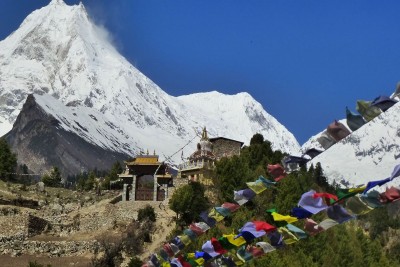
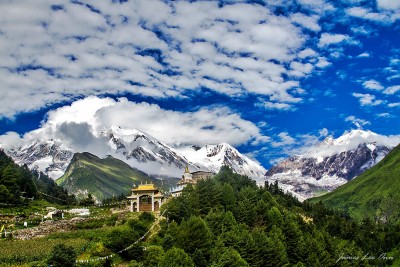
Tsum Valley And Ganesh Base Camp Trek
- Best Prices
- Easy Refund
22 days
USD
1,590
USD
1,270
